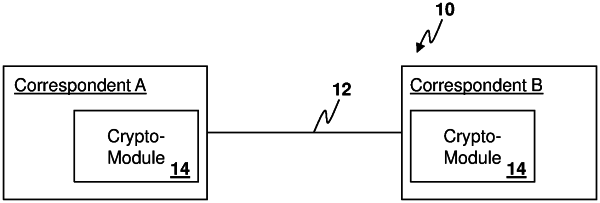| CPC H04L 9/3066 (2013.01) [H04L 9/002 (2013.01); H04L 9/006 (2013.01); H04L 9/0841 (2013.01); H04L 9/0861 (2013.01)] | 21 Claims |

|
1. A method for Cheon-resistance for a static elliptic curve Diffie-Hellman cryptosystem (ECDH), the method comprising:
receiving, at a second computing device and from a first computing device, a public key for the first computing device along with curve parameters of a curve with Cheon resistance, the curve with Cheon resistance comprising a curve chosen from a range of curves matching a threshold efficiency and excluding curves which may include intentional vulnerabilities, and being elected from an additive group of order q, wherein q is prime, such that q−1=cr and q+1=ds, where r and s are primes and c and d are integer Cheon cofactors of the group, such that cd≤48;
selecting a private key for the second computing device;
computing a public key for the second computing device based on the curve parameters and the private key for the second computing device;
transmitting the public key for the second computing device to the first computing device;
computing a shared secret based on the public key for the first computing device and the private key for the second computing device; and
communicating with the first computing device using the shared secret.
|